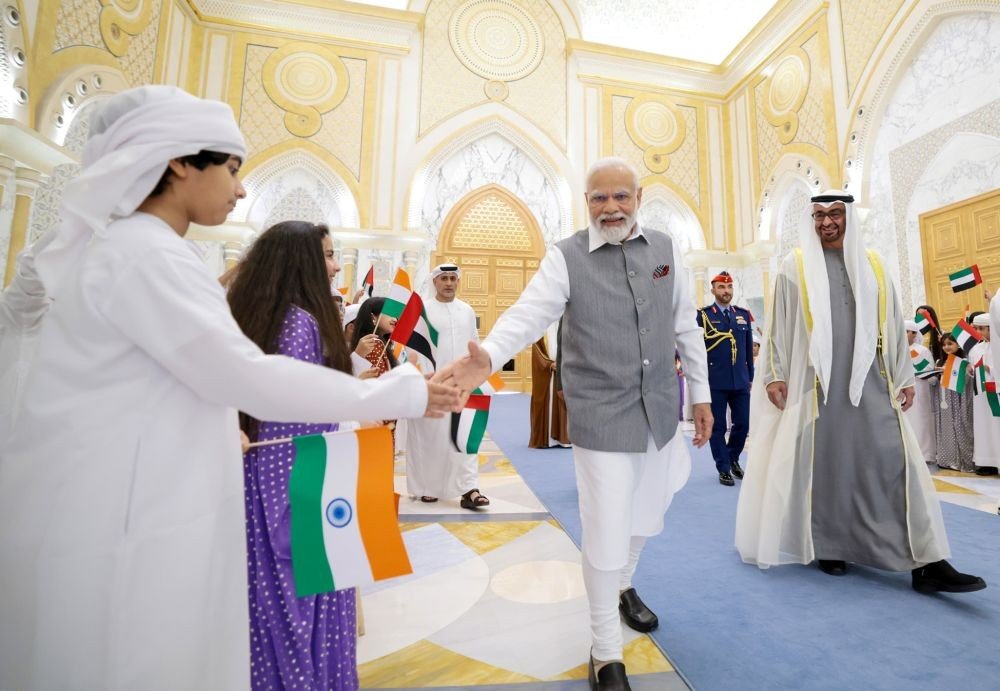
In a significant move to enhance bilateral trade and economic cooperation, India and the United Arab Emirates (UAE) have signed a Memorandum of Understanding (MoU) aimed at settling their transactions in their respective local currencies. This groundbreaking development showcases the deepening ties between the two nations and paves the way for increased trade and investment opportunities. Additionally, the two countries have also agreed to link their fast payment systems, fostering seamless cross-border funds transfers.
A milestone agreement for trade settlement
Prime Minister Narendra Modi and UAE President Sheikh Mohamed bin Zayed Al Nahyan held comprehensive talks in Abu Dhabi on Saturday (July 15, 2023), resulting in the signing of the MoU. The agreement establishes a framework for promoting the use of local currencies, the Indian rupee (INR) and the UAE dirham (AED), for cross-border transactions. By settling trades in their domestic currencies, both countries aim to boost bilateral trade and investments while strengthening economic cooperation and mutual trust.
The growing importance of the Indian rupee
India has been actively seeking to settle more of its trade with other countries using the Indian rupee. The signing of this MoU with the UAE marks India’s latest endeavor to increase the use of its currency for international transactions. In line with this objective, the Reserve Bank of India (RBI) announced the establishment of a mechanism to settle global trade in rupees in July 2022. By expanding the reach of the rupee, India aims to optimize transaction costs, shorten settlement time, and encourage investments and remittances.
Implications for bilateral trade and investments
The agreement between India and the UAE holds immense potential for enhancing bilateral trade. In 2022-23, the UAE emerged as India’s third-largest trade partner, with imports amounting to US$53.23 billion and exports reaching US$31.61 billion. With a target of $100 billion in non-petroleum trade by 2030, the MoU sets the stage for deeper economic engagement between the two nations. By facilitating direct settlement in local currencies, the agreement is expected to strengthen commercial ties and drive further investment opportunities.
Linking fast payment systems
In addition to the trade settlement agreement, India and the UAE have signed a pact to link their fast payment systems. This strategic move connects India’s Unified Payments Interface (UPI) with the UAE’s Instant Payment Platform (IPP). This linkage will enable users in both countries to make fast, secure, and cost-effective cross-border funds transfers. This development aligns with India’s efforts to establish international connections for the UPI, with previous agreements signed with Singapore and France.
Strengthening financial infrastructure
The MoU between India and the UAE also encompasses the cooperation in linking their Card Switches, specifically the RuPay switch and UAESWITCH. This collaboration aims to facilitate mutual acceptance of domestic cards and streamline card transactions. Additionally, the two countries are exploring the linking of payments messaging systems to enhance bilateral financial messaging capabilities. These initiatives demonstrate a commitment to strengthening the financial infrastructure and promoting seamless financial interactions.
By leveraging their respective domestic currencies, the two nations aim to bolster bilateral trade, optimize transaction costs, and promote investments and remittances. Furthermore, the linkage of fast payment systems and collaboration on financial infrastructure will facilitate convenient and secure cross-border funds transfers. As India continues to forge such agreements, its international economic influence and partnerships are set to expand, paving the way for a more interconnected global marketplace.

